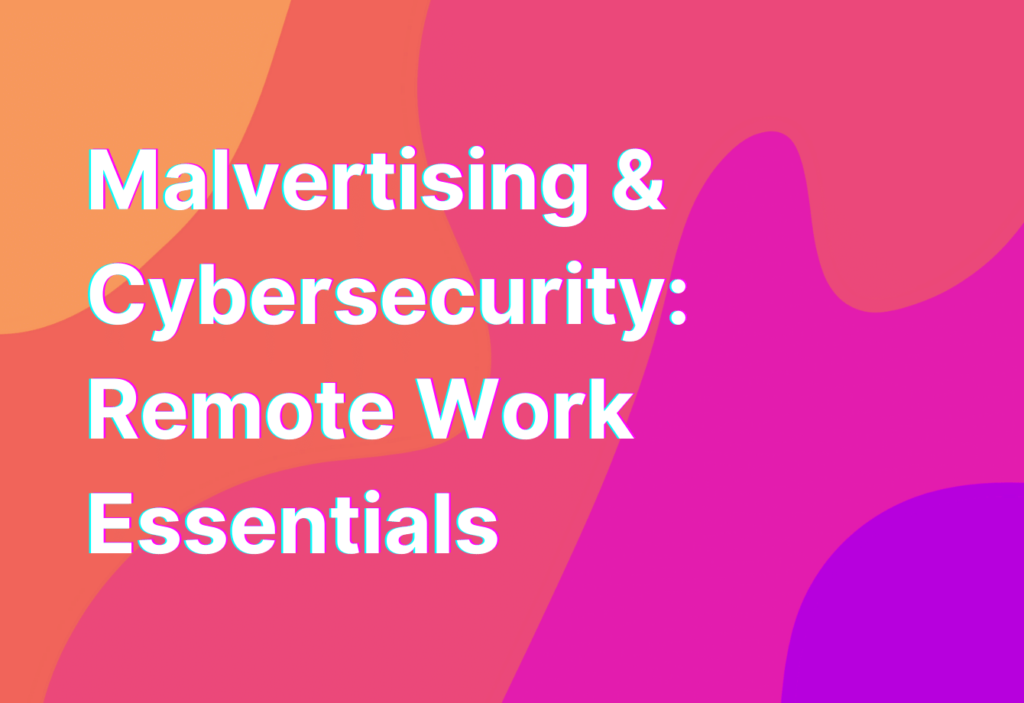Malvertising & Cybersecurity: Remote Work Essentials
Hey there, remote work warriors! It’s Ashley here, your friendly neighborhood remote work advocate. Today, I want to talk about a topic that might not be on the top of your mind when it comes to remote work, but is oh-so-important: malvertising. Yes, you heard me right, malvertising. It’s like advertising, but with a malicious twist. So, grab your cup of coffee and let’s dive into the world of malvertising and how it relates to cybersecurity in the remote work realm.
What is Malvertising?
First things first, let’s break down what malvertising actually means. Malvertising is a combination of the words “malicious” and “advertising.” It refers to the use of online advertisements to spread malware. You know those annoying pop-up ads that seem to follow you around the internet? Well, some of them might not just be annoying, they could be downright dangerous.
Malvertisements can be found on legitimate websites, and they often exploit vulnerabilities in ad networks to deliver malware to unsuspecting users. These ads can contain malicious code that can infect your computer or mobile device with viruses, ransomware, or other types of malware. Yikes!
The Dangers of Malvertising
Now that we know what malvertising is, let’s talk about why it’s such a big deal, especially for remote workers. When you’re working remotely, you’re likely spending a lot of time online, whether it’s browsing the web, checking emails, or collaborating with your team. This increased online presence also means an increased risk of encountering malvertising.
One of the biggest dangers of malvertising is that it can infect your device without you even realizing it. You might click on what seems like a harmless ad, and boom, your computer is infected. This can lead to all sorts of problems, from data breaches to financial loss.
Another danger of malvertising is that it can be difficult to detect. Malicious ads can be designed to look just like regular ads, making it hard to distinguish between the two. This means that even if you’re being cautious and avoiding suspicious websites, you could still be at risk.
Protecting Yourself from Malvertising
Now that we’ve scared you enough with the dangers of malvertising, let’s talk about how you can protect yourself. Here are some essential remote work cybersecurity tips to keep malvertising at bay:
- Keep your software up to date: This might sound like a broken record, but it’s so important. Make sure you regularly update your operating system, web browser, and any other software you use. These updates often include security patches that can help protect you from malvertising.
- Use an ad blocker: Ad blockers can be a great line of defense against malvertising. They can help block malicious ads from appearing on your screen, reducing the risk of infection. Just make sure to whitelist any websites you trust to support their revenue streams.
- Be cautious of clicking on ads: As tempting as it may be to click on that flashy ad promising you a free vacation, exercise caution. Think twice before clicking on any ads, especially if they seem too good to be true.
- Enable click-to-play plugins: Most web browsers allow you to enable click-to-play plugins, which means that plugins like Flash won’t automatically run on websites. This can help prevent malicious ads from running without your consent.
- Invest in a reliable antivirus software: Having a good antivirus software is essential for remote workers. It can help detect and remove malware, including malvertising, from your device. Do your research and choose a reputable antivirus program that suits your needs.
By following these tips, you’ll be well on your way to protecting yourself from the dangers of malvertising. But remember, cybersecurity is an ongoing effort, so stay vigilant and keep up with the latest best practices.
Wrapping Up
Well, folks, we’ve reached the end of our malvertising journey. I hope you’ve learned a thing or two about this sneaky form of cyber threat and how it can impact remote workers. Remember, when it comes to malvertising, prevention is key. Stay updated, use ad blockers, be cautious, enable click-to-play plugins, and invest in reliable antivirus software.
And hey, if you want to dive deeper into the world of remote work cybersecurity, be sure to check out Network traffic analysis. It’s a fascinating topic that can help you better understand and protect yourself from cyber threats in the remote work environment.
Until next time, stay safe and keep rocking that remote work life!


